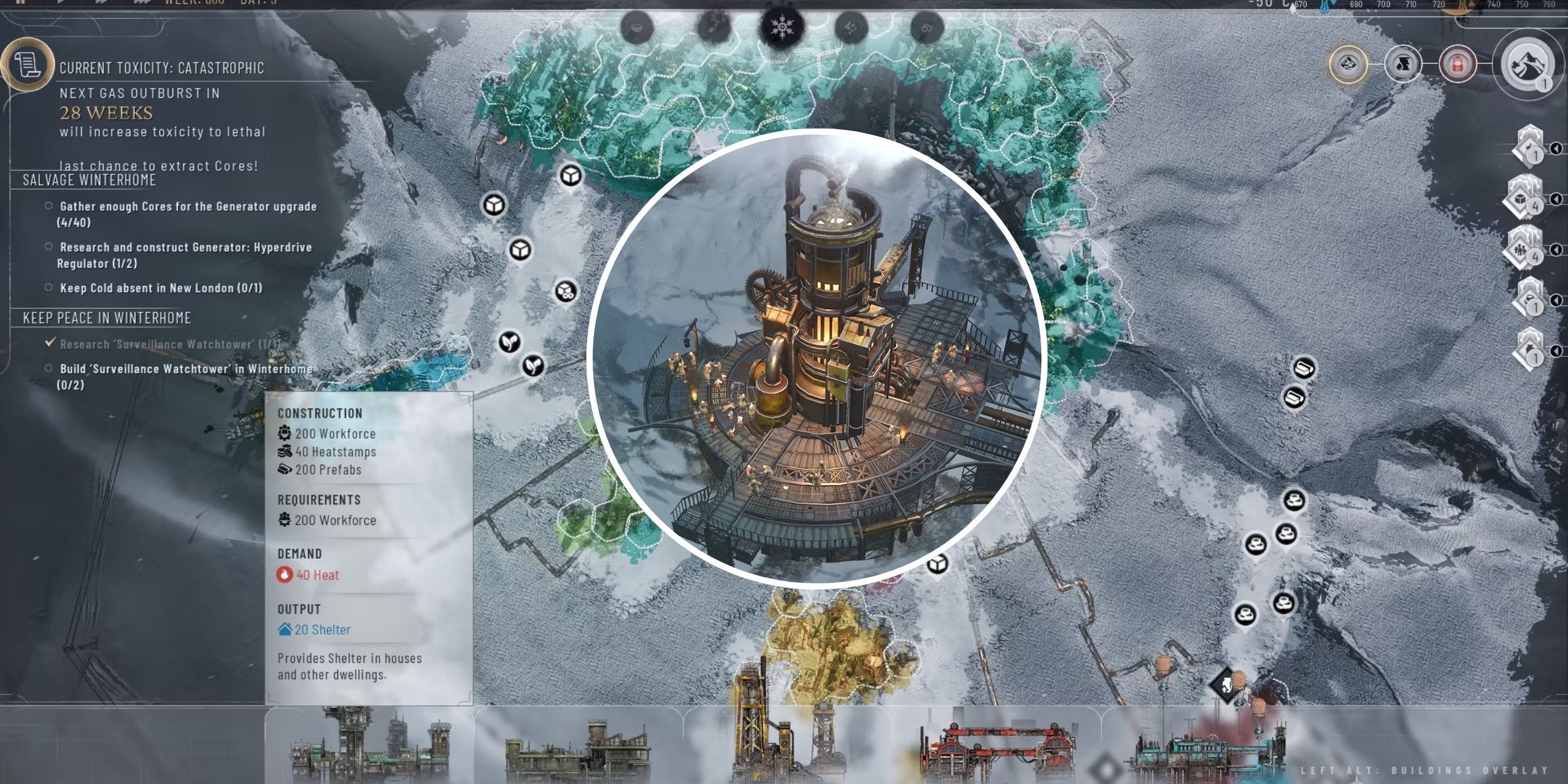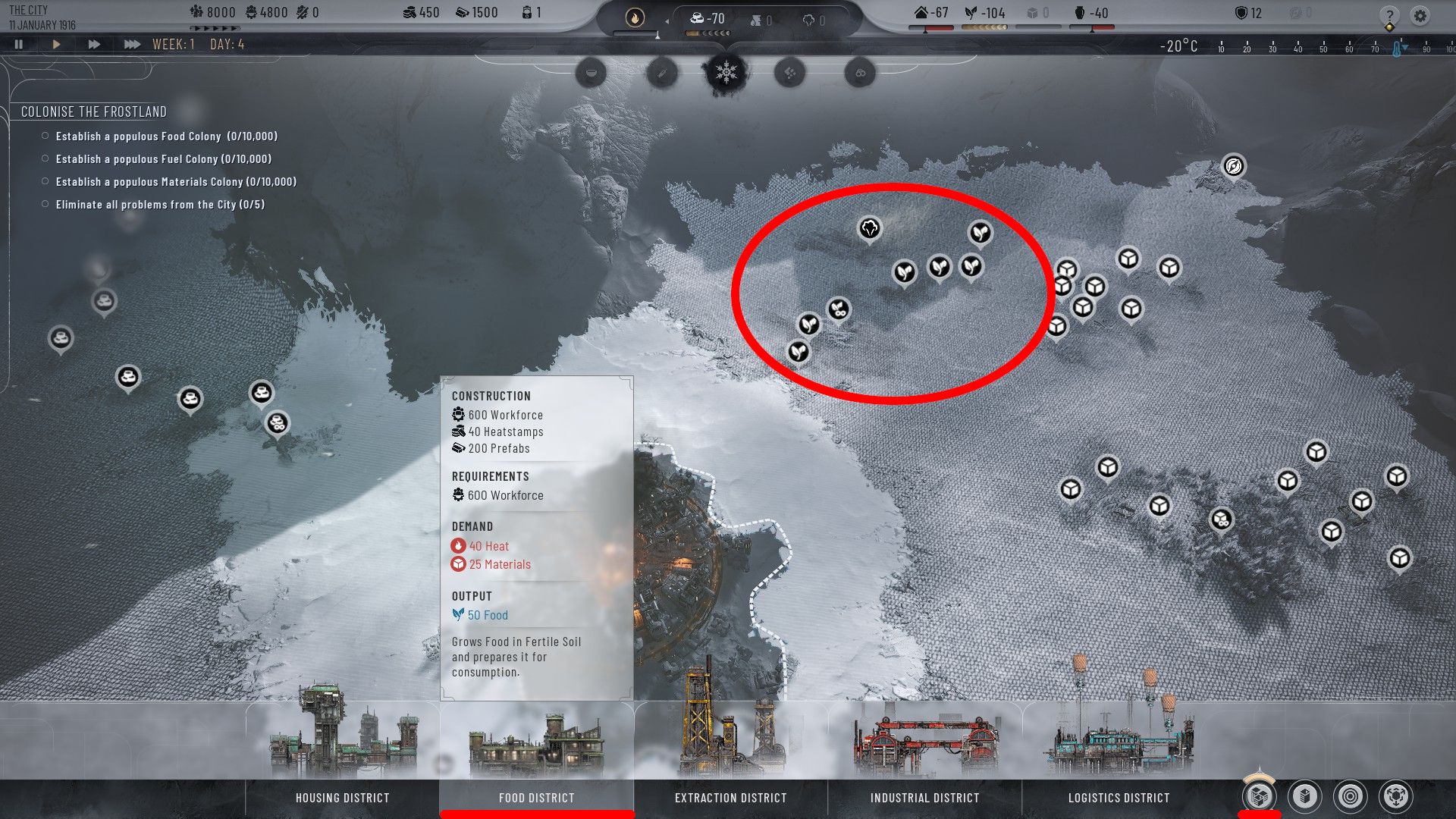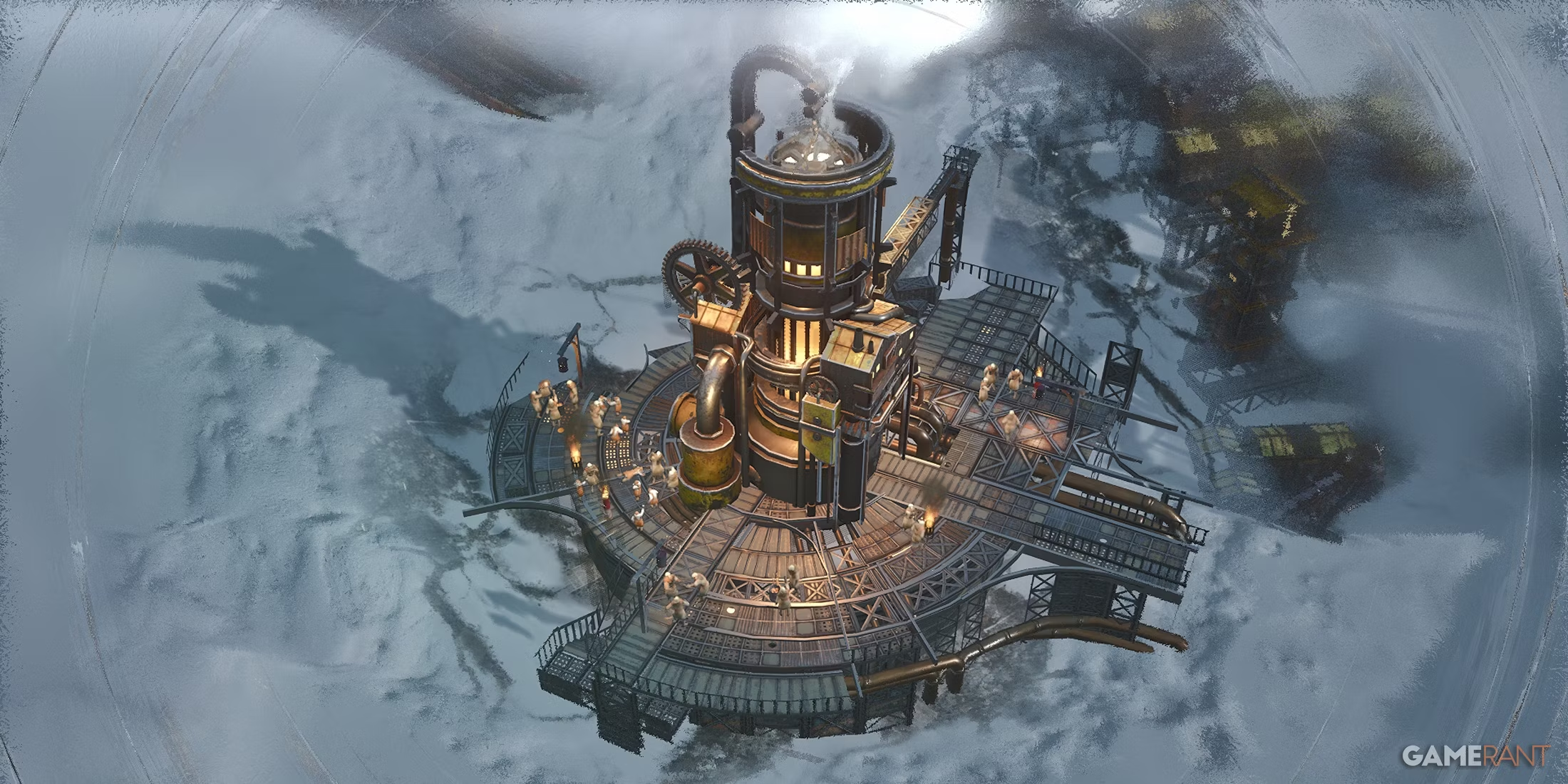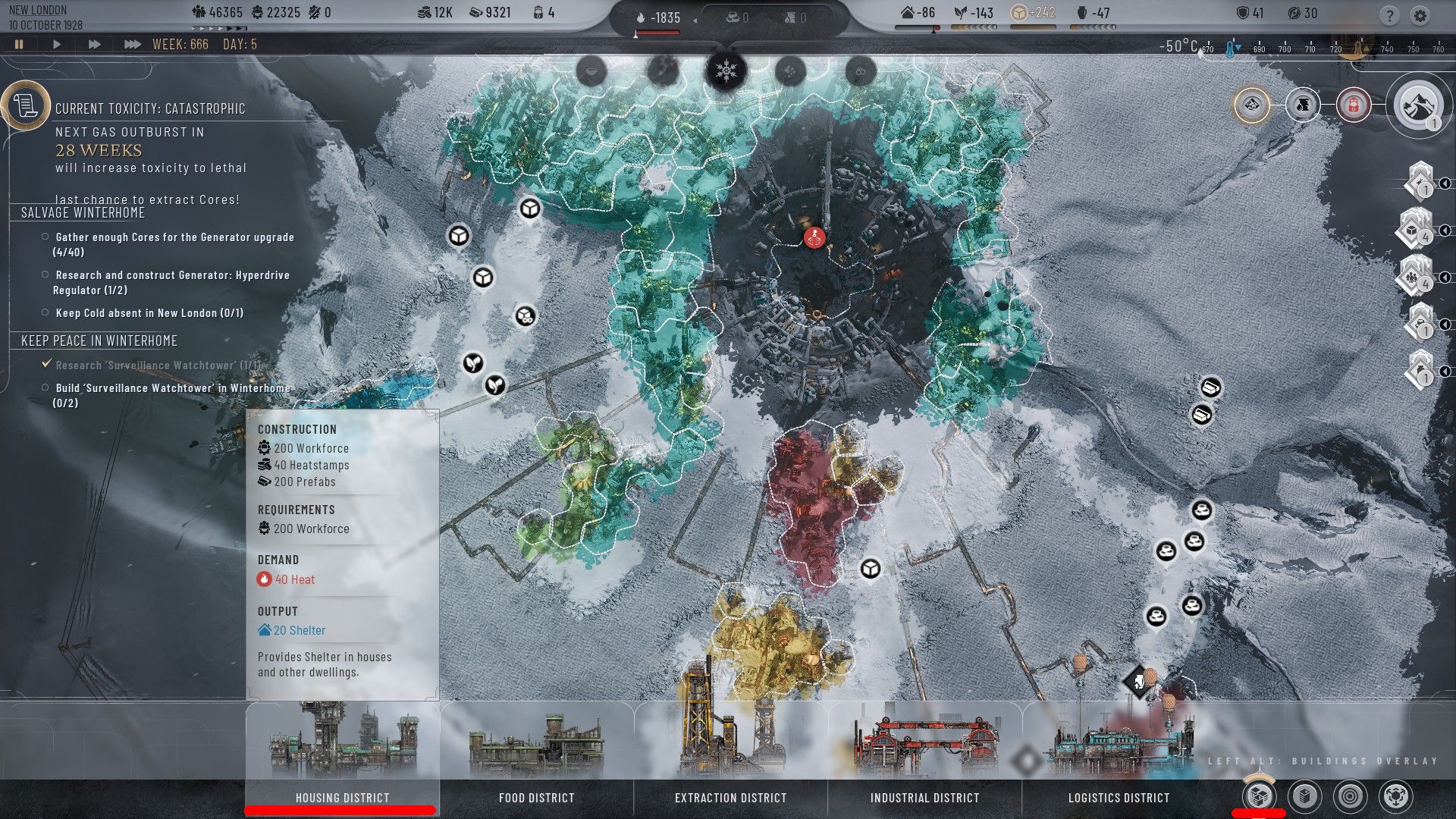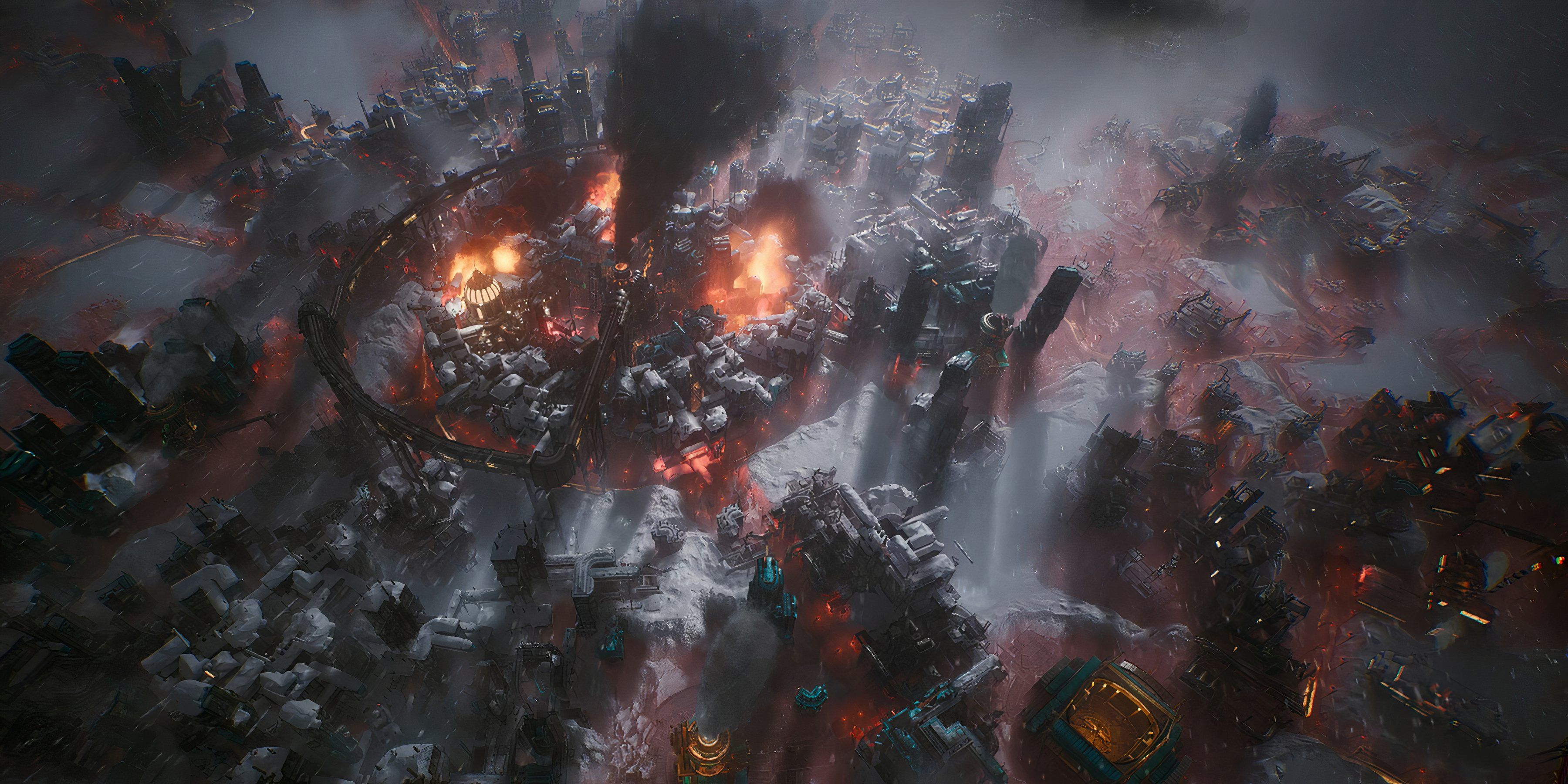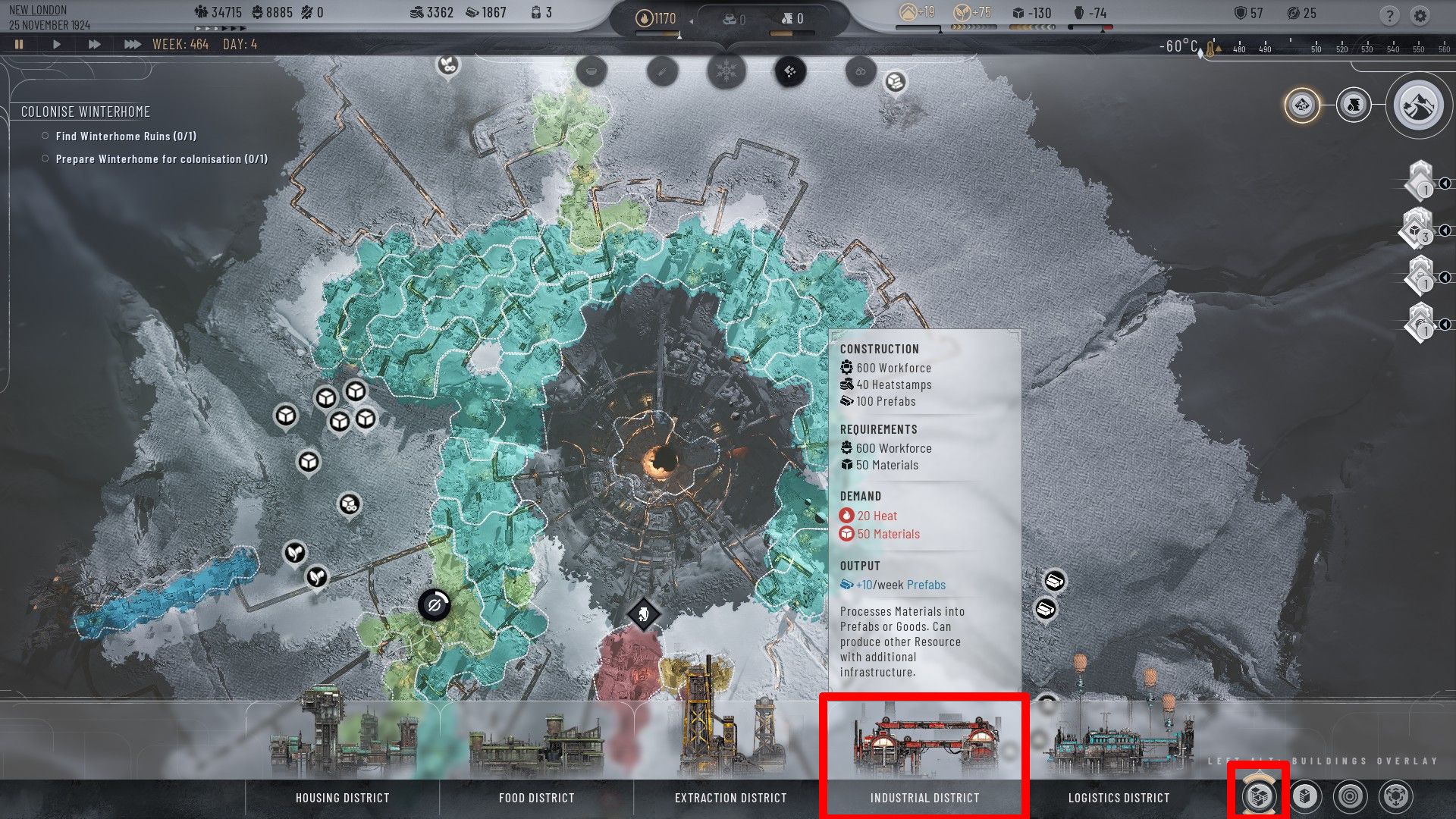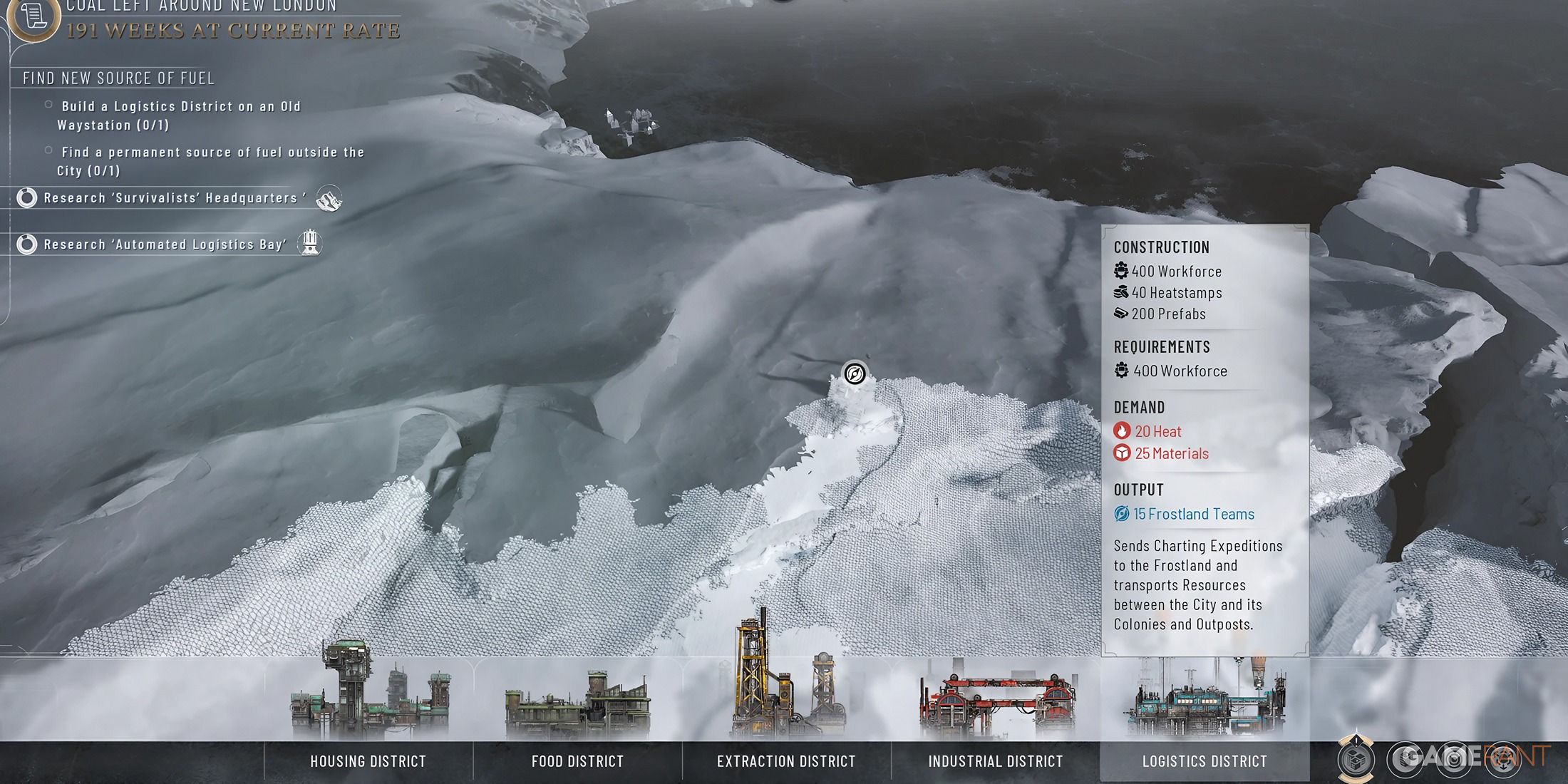Districts are the literal building blocks of your city Frostpunk 2. Districts not only help you structure your city, but they also provide important resources, influence your city's morale, and determine your overall success. Whether it's Food, Shelter, or Frostland teams, you'll need to build different districts to meet the needs of your citizens. This guide explains the different types of districts Frostpunk 2 This allows you to prioritize and build them according to your needs.
All districts in Frostpunk 2
There are different types of districts Frostpunk 2. Each district serves a specific function, ensuring your city is constantly supplied with essentials to survive the harsh temperatures.
Food district
Food districts are responsible Produce food to feed your population and ensure your city's survival in harsh weather. You should start building multiple food districts as soon as possible to stock up on food and overcome food shortages during extreme weather conditions. As your city grows, the demand for food will increase. You must expand your food district to meet the growing needs of your citizens.
Extraction Districts are special buildings dedicated to this purpose Extraction of resources from deposits. You can extract finished parts, materials, oil and other valuable resources from various deposits.
As soon as a deposit is exhausted, a production area loses a large part of its value. Productivity will decrease and maintenance may no longer be worth it. You can destroy a depleted mining area and receive a partial refund to recover some of your original investment.
residential area
residential districts Offer your citizens protection to survive in the harsh winter conditions. While they do not directly increase your population, residential districts provide the space and resources to accommodate new settlers from expeditions or natural population growth. If you notice a drop in your heat index, it is often due to a lack of living space.
Central District
Think of the Central District as the administrative center of your city. It lies in the heart of your settlement and houses the council hall and the generator. In the Council Chamber you can propose or approve laws that you think are appropriate for your city. The generator is a powerful heat source that provides heat to the surrounding districts and ensures that they survive the harsh winter. You can expand the Central District to expand your city.
industrial area
Industrial areas are essential for Manufacture of goods and finished parts In Frostpunk 2. You can commission an industrial area to produce goods or finished parts, depending on what you need at the time. Goods reduce crime and increase income, while manufactured homes are necessary for construction. As your city grows, you will need multiple industrial areas to meet these needs.
Logistics District
Logistics districts are essential for Expand your city's reach and search for resources. These districts can only be built on ancient waystations located near the corners of the map. This means you have to advance into these areas before you can build one.
Once you have a Logistics District, you gain access to Frostland teams that can go on expeditions and even establish colonies. Building additional logistics districts will give you more Frostland teams, allowing you to conduct more expeditions.
